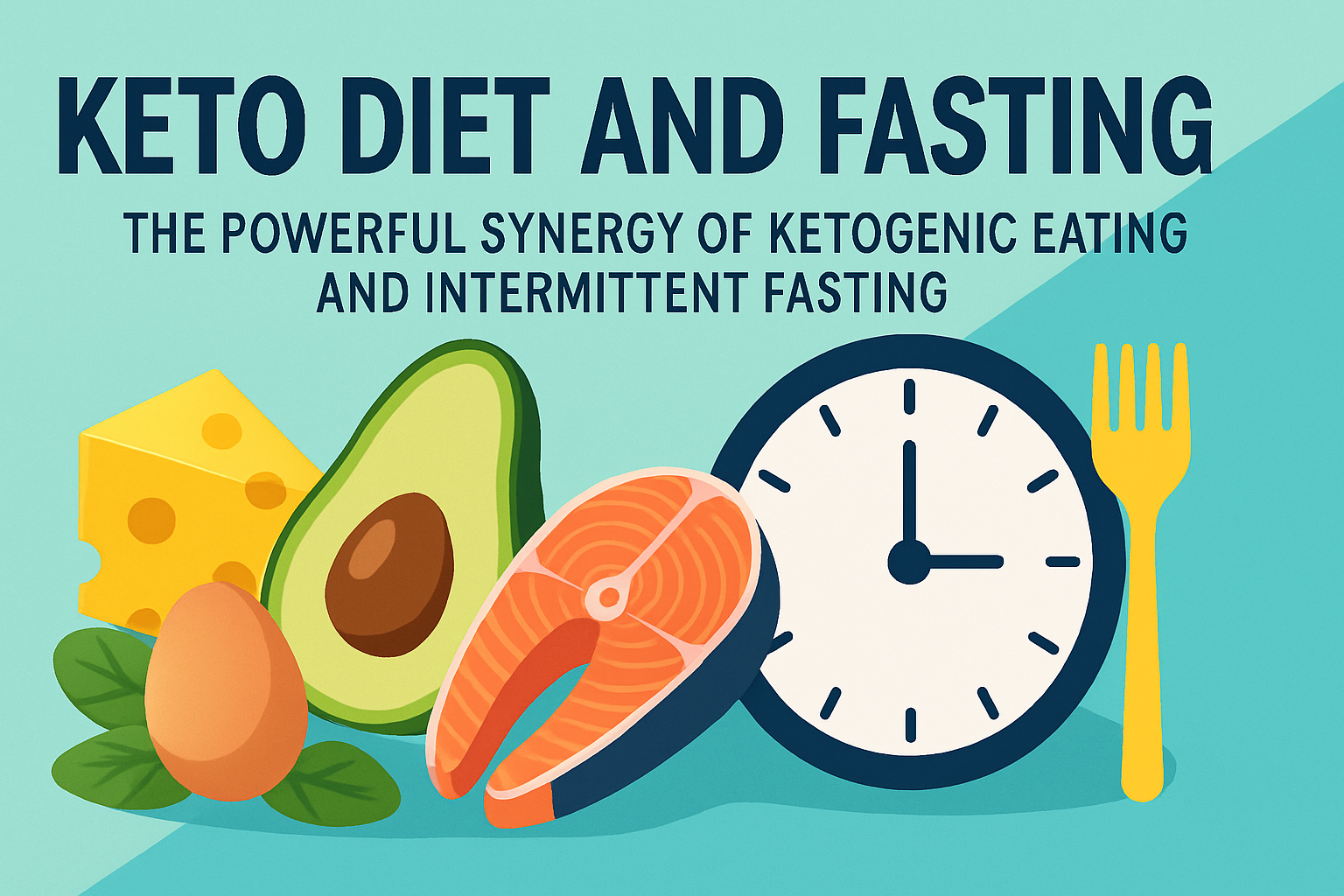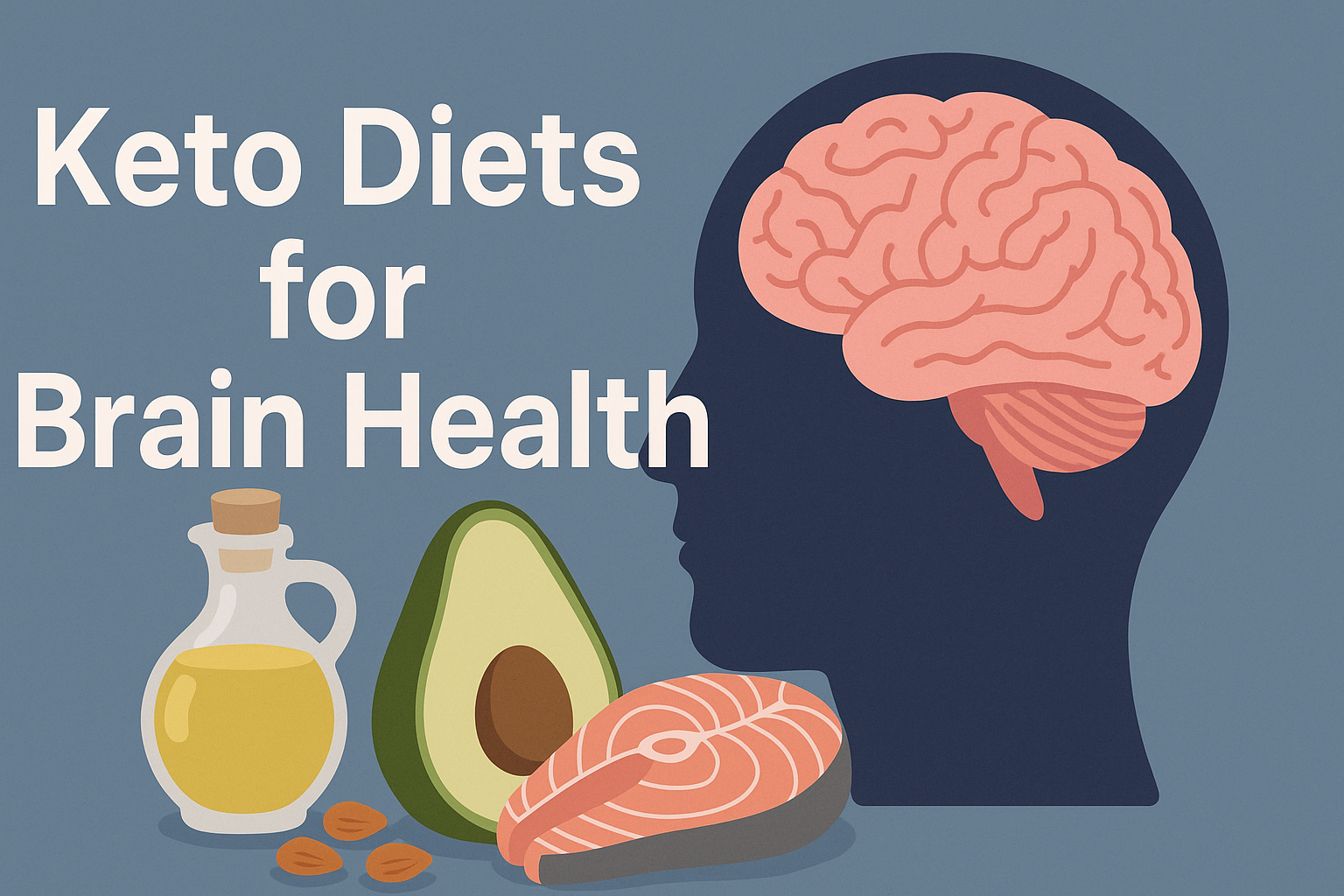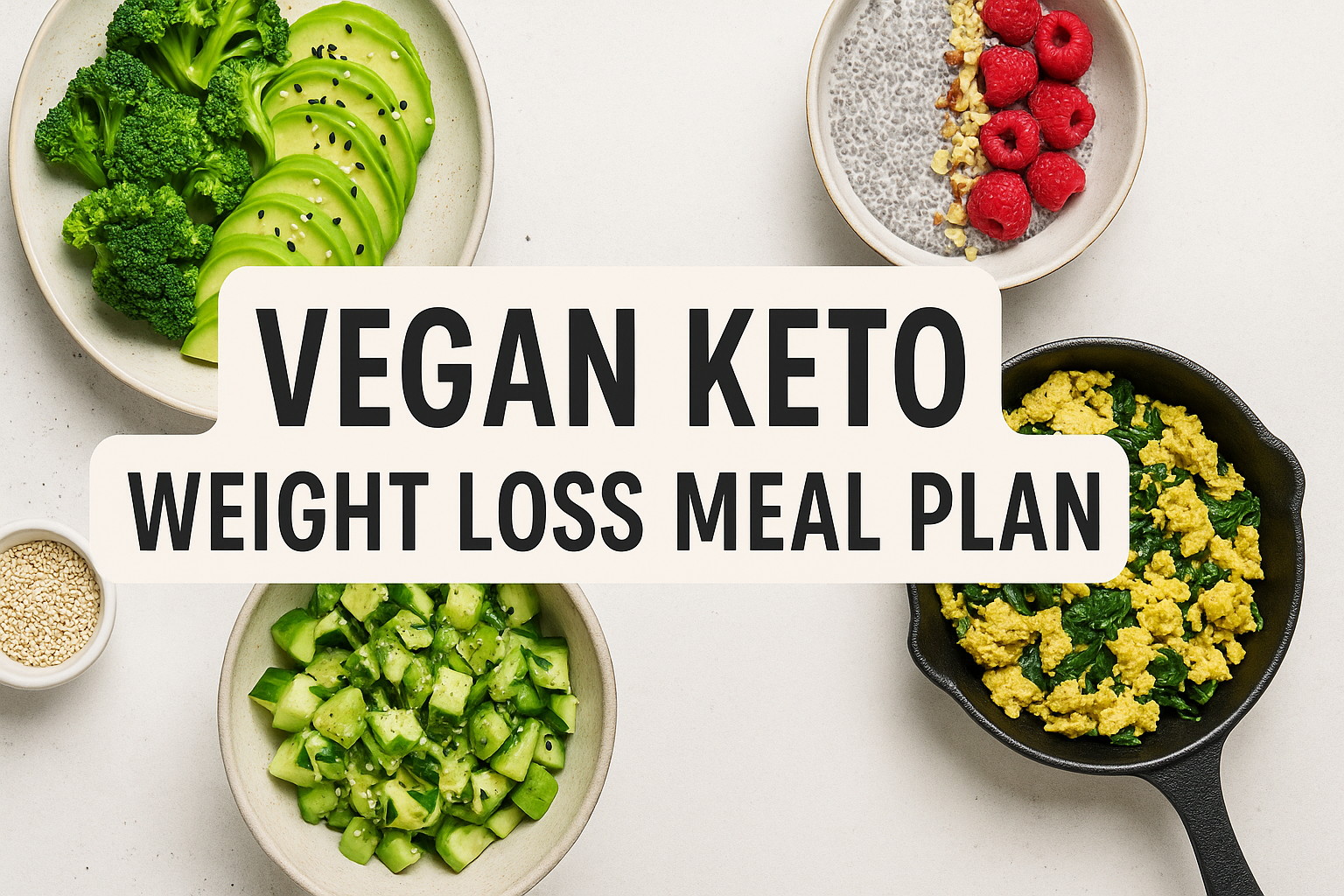Introduction
I still remember the first time I combined the keto diet and fasting. The mental clarity, sustained energy, and rapid fat loss were unlike anything I’d experienced before.
This powerful combination has transformed our understanding of nutrition and metabolic health, offering benefits that extend far beyond weight loss.
In this article, we’ll explore the science behind keto diet and intermittent fasting and how you can leverage their synergistic effects to enhance your health and well-being.
To track your ketosis levels and optimize your results, consider using the KetoSens Blood Ketone Monitoring Starter Kit —a must-have tool for anyone serious about keto and fasting. Check the price HERE.
Affiliate Disclaimer: This article may contain affiliate links, which means I may earn a small commission at no additional cost to you if you make a purchase through these links. As an affiliate, I only recommend products and services I trust and believe will add value to my readers.
Understanding the Basics: Ketosis and Fasting
The Ketogenic Diet: A Metabolic Shift
The ketogenic diet is a high-fat, moderate-protein, and very low-carbohydrate eating plan. By drastically reducing carbohydrate intake (typically to less than 50g per day), your body enters a metabolic state called ketosis.
In this state, your body shifts from using glucose as the primary fuel source to burning fat and producing ketones for energy.
This metabolic switch affects your entire physiology. Ketones, particularly beta-hydroxybutyrate (BHB), have neuroprotective properties and can enhance cognitive function.
The ketogenic state also improves insulin sensitivity, reduces inflammation, and influences gene expression.
Intermittent Fasting: The Importance of Timing
Intermittent fasting focuses on when you eat as opposed to what you eat. It involves cycling between periods of eating and fasting.
Common approaches include:
- The 16/8 method: Fasting for 16 hours and eating within an 8-hour window
- Alternate-day fasting
- Extended fasting periods of 24 hours or more
Fasting triggers several beneficial physiological responses. It increases autophagy (your body’s cellular recycling process), boosts growth hormone production, and improves insulin sensitivity.
Fasting also activates sirtuins, a group of proteins associated with longevity and cellular health.
The Keto-Fasting Synergy: Amplifying Benefits
When you combine ketogenic eating with intermittent fasting, you create a metabolic environment that amplifies the benefits of both approaches. Here’s how:
Accelerated Ketosis
Fasting depletes glycogen stores more quickly, speeding up the transition into ketosis. This can help mitigate the “keto flu” symptoms many experience when first adopting a ketogenic diet.
Enhanced Fat Adaptation
The combination of the keto diet and fasting speeds up your body’s ability to efficiently use fat for fuel, leading to improved metabolic flexibility.
Increased Autophagy
Both ketosis and fasting stimulate autophagy, but together, they enhance this cellular cleaning process even further.
Improved Insulin Sensitivity
The keto-fasting combo leads to more significant improvements in insulin sensitivity than either approach alone.
Cognitive Benefits
Many people report enhanced mental clarity and focus when combining keto with fasting. This is likely because of the neuroprotective effects of ketones and the cognitive benefits associated with fasting.
Implementing the Keto-Fasting Approach
Now that we understand the potential benefits, let’s explore how to apply this approach effectively:

1. Start with Keto
Begin by adopting a well-formulated ketogenic diet. Aim for 70-75% of calories from fat, 20-25% from protein, and 5-10% from carbohydrates.
Focus on whole, nutrient-dense foods like:
- Avocados
- Nuts and seeds
- Fatty fish (salmon, mackerel, sardines)
- Grass-fed meats
- Olive oil and coconut oil
- Low-carb vegetables (leafy greens, broccoli, cauliflower)
2. Gradually Introduce Fasting
Once you’re fat-adapted (typically after 2-4 weeks on keto), start with shorter fasting windows. Begin with a 12/12 approach (12 hours fasting, 12 hours eating) and gradually extend to 16/8 or beyond as comfortable.
3. Stay Hydrated
Proper hydration is crucial, especially when combining keto and fasting. Aim for at least 2-3 liters of water daily.
Consider adding electrolytes to your water, especially during longer fasting periods.
4. Monitor Nutrient Intake
With a restricted eating window, it’s essential to confirm you’re getting adequate nutrients. Focus on nutrient-dense, whole foods during your eating periods.
Consider tracking your food intake using an app to confirm you’re meeting your nutritional needs.
5. Listen to Your Body
Pay attention to how you feel. If you experience persistent fatigue, irritability, or other negative symptoms, adjust your approach accordingly.
Remember, this is a flexible approach that can be tailored to your person needs and lifestyle.
Potential Challenges and How to Overcome Them
While the keto-fasting combination can be powerful, it’s not without potential challenges:
Electrolyte Imbalances
Both keto and fasting can lead to increased electrolyte excretion. Combat this by increasing your intake of sodium, potassium, and magnesium.
Consider adding sea salt to your water or taking electrolyte supplements.
A great Electrolyte supplement is Ultima Replenisher Daily Electrolyte Powder Drink Mix, read a full review HERE or check the price HERE.

Hormonal Changes
Women, in particular, may experience hormonal fluctuations. Consider a more moderate approach, such as cyclical keto or shorter fasting windows.
Pay attention to your menstrual cycle and adjust your fasting schedule accordingly.
Do you want to know more about keto and hormonal challenges? Read THIS article about Keto Diets for Hormonal Balance.
Social Challenges
Combining keto and fasting can make social eating situations challenging. Plan ahead and talk your needs to friends and family.
Consider adjusting your fasting window to accommodate social events when necessary.
Nutrient Deficiencies
With a restricted diet and eating window, nutrient deficiencies can occur. Consider supplementation and focus on nutrient-dense foods during your eating periods.
Key nutrients to watch include:
- Omega-3 fatty acids
- Vitamin D
- Magnesium
- B vitamins
- Iron (especially for menstruating women)
Overcoming Plateaus
As your body adapts, you may experience plateaus in fat loss or other benefits. Experiment with varying your fasting schedule or adjusting your macronutrient ratios to overcome these.
Some strategies include:
- Incorporating longer fasts (24-48 hours) once a month
- Adjusting your protein intake
- Adding in strategic carb refeeds
- Incorporating resistance training
Advanced Techniques for Maximizing Benefits
Once you’ve mastered the basics, consider these advanced techniques:
Fat Fasting
Incorporate short periods (1-3 days) of very high fat, low protein, and minimal carb intake to deepen ketosis. This technique can be particularly useful for breaking through fat loss plateaus.
Exogenous Ketones
Use ketone supplements strategically to enhance ketosis during longer fasts or to support performance. These can be particularly helpful during the transition to a ketogenic diet or when reintroducing fasting.
Targeted Keto
For athletes, experiment with small amounts of carbs around workouts while maintaining ketosis. This approach can help support high-intensity performance without compromising the benefits of ketosis.
Extended Fasting
Gradually work up to longer fasting periods (24-72 hours) for enhanced autophagy and cellular rejuvenation. Always talk to a healthcare professional before attempting extended fasts.
Cyclical Keto
Incorporate periodic higher-carb days to support hormonal balance and metabolic flexibility. This approach can be particularly beneficial for women and athletes.
The Road to Mastery: Building on the Basics
As you progress on your keto-fasting journey, remember that mastery comes from consistent practice and ongoing learning. Stay informed about the latest research, experiment with different approaches, and always listen to your body.
Consider keeping a detailed journal of your food intake, fasting periods, and how you feel. This can help you identify patterns and improve your approach over time.
Exercises to Enhance Your Keto-Fasting Experience
Mindful Eating
Practice eating slowly and mindfully during your eating windows to enhance satiety and digestion. Try these techniques:
- Put your fork down between bites
- Chew each mouthful thoroughly
- Pay attention to the flavors, textures, and aromas of your food
- Eat without distractions (no TV, phone, or computer)
Fasted Exercise
Experiment with light to moderate exercise during your fasting periods to enhance fat burning and ketone production. Start with low-intensity activities like walking or yoga, and gradually increase intensity as you become more adapted.
Stress Management
Incorporate stress-reduction techniques like meditation or yoga, as stress can impact both ketosis and the benefits of fasting. Try these practices:
- Deep breathing exercises
- Progressive muscle relaxation
- Guided imagery
- Mindfulness meditation
Sleep Optimization
Prioritize quality sleep, as poor sleep can negatively affect hunger hormones and metabolic health. Aim for 7-9 hours of sleep per night and establish a consistent sleep schedule.
Create a relaxing bedtime routine and optimize your sleep environment for better rest.
Ketone Tracking
Use a ketone meter to track your ketone levels at different times of day and in response to various foods and fasting durations. This can help you understand how your body responds to different variables and fine-tune your approach.
Track Your Ketone Levels with Precision! Ensure you’re in ketosis and monitor your blood ketone levels effortlessly with the KetoSens Blood Ketone Monitoring Starter Kit. Stay on top of your progress with real-time tracking! Check the price of the KetoSens Blood Ketone Monitoring Starter Kit HERE!
The Science Behind Keto-Fasting Synergy
The combination of ketogenic eating and intermittent fasting creates a unique metabolic environment that amplifies the benefits of both approaches. Let’s explore further into the scientific mechanisms at play:
Metabolic Flexibility
Keto-fasting enhances your body’s ability to switch between different fuel sources efficiently. This metabolic flexibility improves insulin sensitivity, reduces inflammation, and supports overall metabolic health.

Mitochondrial Biogenesis
Both ketosis and fasting stimulate the creation of new mitochondria, the powerhouses of your cells. This process, called mitochondrial biogenesis, can improve energy production and cellular health.
AMPK Activation
The keto-fasting combo activates AMP-activated protein kinase (AMPK), a key regulator of cellular energy homeostasis. AMPK activation promotes fat oxidation, glucose uptake, and mitochondrial function.
mTOR Inhibition
Fasting and ketosis both inhibit the mammalian target of rapamycin (mTOR) pathway. This inhibition promotes autophagy, cellular repair, and longevity.
Neuroprotection
Ketones, particularly beta-hydroxybutyrate (BHB), have neuroprotective properties. They can cross the blood-brain barrier and provide an effective energy source for brain cells.
This, combined with the cognitive benefits of fasting, can support brain health and function.
Customizing Your Keto-Fasting Approach
Remember, there’s no one-size-fits-all approach to keto-fasting. It’s essential to customize the approach to your person needs, goals, and lifestyle.
Here are some factors to consider:
Activity Level
If you’re highly active or an athlete, you may need to adjust your macronutrient ratios or incorporate targeted carbohydrate intake around workouts.
Health Status
If you have any pre-existing health conditions, talk to a healthcare professional before starting a keto-fasting regimen. Certain conditions may require modifications to the standard approach.
Age and Gender
Older adults and women may need to take a more moderate approach to fasting, as hormonal balance becomes increasingly important.
Lifestyle Factors
Consider your work schedule, social commitments, and family responsibilities when designing your fasting schedule. Choose an approach that’s sustainable for your lifestyle.
Long-Term Sustainability
While the keto-fasting approach can be highly effective, it’s essential to consider long-term sustainability. Here are some strategies for making this approach a lasting part of your lifestyle:
Cyclical Approaches
Consider incorporating periods of higher carbohydrate intake or less strict fasting schedules. This can help prevent burnout and support long-term adherence.
Focus on Whole Foods
Prioritize nutrient-dense, whole foods as opposed to processed “keto-friendly” products. This confirms you’re getting a wide range of nutrients and supports overall health.
Regular Check-Ins
Periodically reassess your goals and adjust your approach as needed. Your nutritional needs may change over time, and it’s important to stay flexible.
Mindset Shift
View keto-fasting as a tool for health and well-being as opposed to a restrictive diet. This mindset shift can help you maintain a healthy relationship with food and your body.
Potential Risks and Precautions
While the keto-fasting approach can be beneficial for many, it’s not suitable for everyone. Be aware of these potential risks and take necessary precautions:
Hypoglycemia
Some people may experience low blood sugar, especially during the initial adaptation period. Monitor your blood glucose levels and be prepared to break your fast if needed.
Dehydration
Both ketosis and fasting can increase water and electrolyte loss. Stay well-hydrated and consider supplementing with electrolytes.
Nutrient Deficiencies
A poorly planned ketogenic diet combined with fasting can lead to nutrient deficiencies. Focus on nutrient-dense foods and consider supplementation as needed.
Disordered Eating Patterns
For some individuals, strict dietary rules can trigger disordered eating patterns. If you have a history of eating disorders, work closely with a healthcare professional.
Medical Conditions
Certain medical conditions may make keto-fasting inappropriate or require close medical supervision. Always talk to a healthcare provider before starting any new dietary regimen.
The Future of Keto-Fasting Research
The field of keto-fasting research is rapidly evolving. Here are some exciting areas of ongoing investigation:
Cancer Therapy
Preliminary research suggests that the keto-fasting approach may have potential as an adjunct therapy for certain types of cancer. Studies are exploring how this metabolic approach might enhance the effectiveness of traditional cancer treatments.
Read the article about Ketogenic Diet Lung Cancer Success Stories
Neurodegenerative Diseases
Researchers are investigating the potential neuroprotective effects of ketones and fasting for conditions like Alzheimer’s and Parkinson’s disease.
Longevity
The impact of keto-fasting on cellular aging and longevity is an area of intense interest. Studies are exploring how this approach might influence telomere length, senescent cell accumulation, and other markers of aging.
Gut Microbiome
The effects of keto-fasting on the gut microbiome are being studied, with potential implications for digestive health, immune function, and overall well-being.
Personalized Nutrition
As our understanding of genetics and person metabolic responses grows, researchers are exploring how to tailor keto-fasting approaches to person needs and genetic profiles.
Key Takeaways
- The combination of ketogenic eating and intermittent fasting can amplify the benefits of both approaches.
- Start with a well-formulated ketogenic diet before gradually introducing fasting.
- Stay hydrated and pay attention to electrolyte balance.
- Listen to your body and adjust your approach as needed.
- Consider advanced techniques once you’ve mastered the basics.
- Customize your approach based on person factors like activity level, health status, and lifestyle.
- Focus on long-term sustainability and a healthy relationship with food.
- Be aware of potential risks and take necessary precautions.
- Stay informed about ongoing research in the field of keto-fasting.
- Keep in mind that keto-fasting serves as a tool for enhancing health and well-being, not a universal solution.
People Also Asked
What is the best fasting schedule for ketosis?
The 16/8 method (16 hours fasting, 8 hours eating) is often considered an effective fasting schedule for maintaining ketosis. However, person responses may vary.
Can you drink coffee while intermittent fasting on keto?
Black coffee without added fats or sweeteners is generally considered acceptable during fasting periods on a ketogenic diet.
How long does it take to get into ketosis when fasting?
The time to enter ketosis can vary, but many people enter a light ketotic state after 12-16 hours of fasting. Full ketosis may take 24-48 hours or longer.
Is it safe to exercise while fasting on keto?
Light to moderate exercise during fasting periods can be safe and beneficial for many people. However, it’s important to listen to your body and adjust as needed.
Can intermittent fasting kick you out of ketosis?
Properly implemented intermittent fasting typically enhances ketosis as opposed to disrupting it. However, breaking your fast with high-carb foods could temporarily interrupt ketosis.
What are the signs that you’re in ketosis?
Common signs of ketosis include increased energy, reduced hunger, improved mental clarity, and a fruity or metallic taste in the mouth. However, measuring ketone levels provides the most accurate indication.
How much weight can you lose in a month with keto and intermittent fasting?
Weight loss varies greatly between people. Some people may lose 4-10 pounds in the first month, while others may lose more or less.
Sustainable fat loss is typically 1-2 pounds per week.
Can you drink alcohol on a keto-fasting diet?
While some low-carb alcoholic beverages may be compatible with a ketogenic diet, alcohol can interfere with ketosis and fasting benefits. Generally, experts recommend limiting or avoiding alcohol during a keto-fasting regimen.
Is the keto-fasting approach suitable for diabetics?
The keto-fasting approach may have benefits for some diabetics, particularly in improving insulin sensitivity. However, it’s crucial for diabetics to work closely with their healthcare provider before making significant dietary changes.
How does keto-fasting affect cholesterol levels?
The effects of keto-fasting on cholesterol can vary. Some people experience improvements in their lipid profile, while others may see an increase in LDL cholesterol.
Regular monitoring and personalized adjustments are important.




